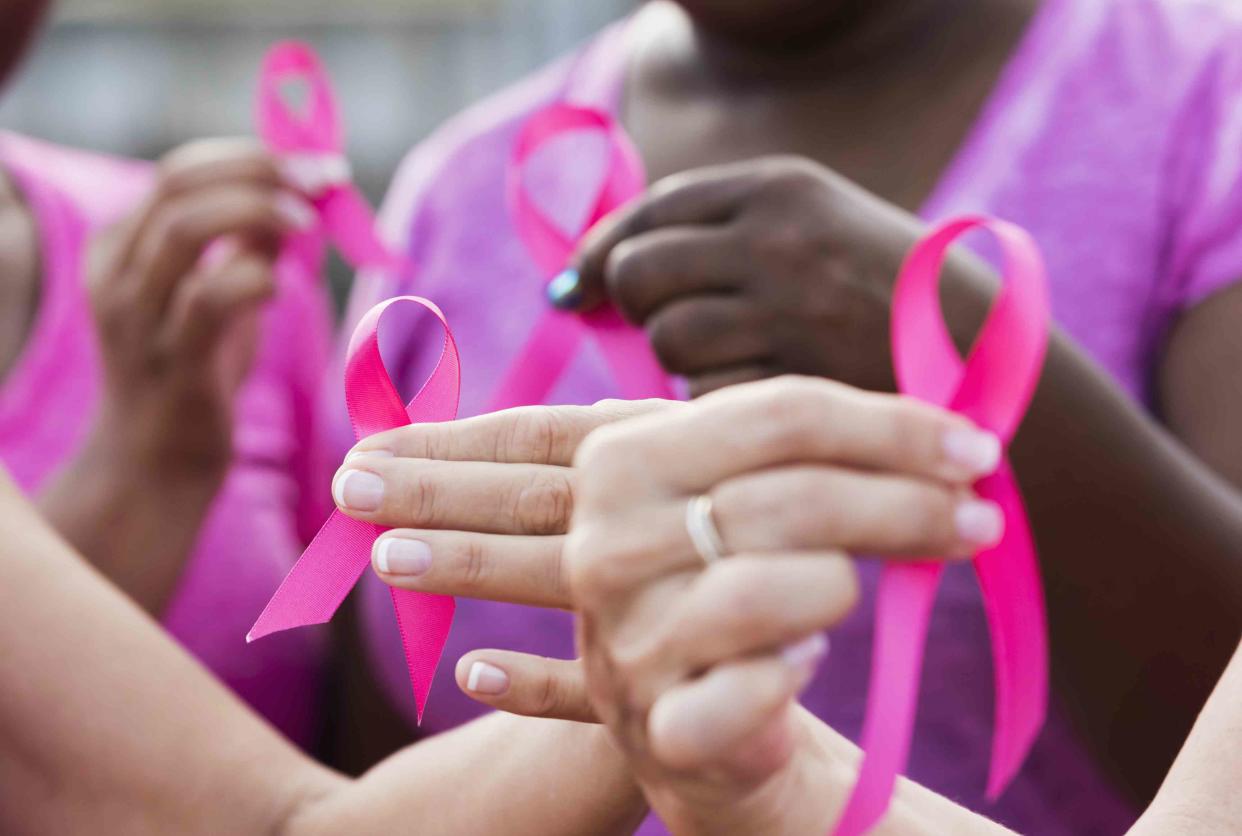Most People With Early Stage Breast Cancer Will Be Long-Term Survivors: Study

kali9 / Getty Images
- Oops!Something went wrong.Please try again later.
Fact checked by Nick Blackmer
Key Takeaways
New research shows that people diagnosed with early stage breast cancer have a high survival rate and are likely to become long-term survivors.
While the research did not focus on why mortality rates have improved, experts suggest it’s due to better treatments and earlier screenings.
Women with a history of breast cancer in their families or with genetic predisposition to the disease should go for regular check-ups and screenings to increase the chance of early detection.
There’s some good news as it relates to breast cancer—the most common type of cancer in women after skin cancer. New research shows that most women diagnosed with early stage breast cancer are likely to become long-term survivors.
Researchers in the U.K. analyzed data from the National Cancer Registration and Analysis Service and found that the average risk of dying from breast cancer in the five years after a diagnosis has fallen from 14% to 5% since the 1990s.
The research, recently published in the BMJ, used a sample size of around half a million women diagnosed with early invasive breast cancer in England from 1993 to 2015, with follow-up through 2020.
“We found that prognosis has improved substantially during the past 20 years. Prognosis improved in nearly every group of women studied,” Carolyn Taylor, MRCP, FRCR, DPhil, the lead author of the research, and David Dodwell, MD FRCP, FRCR, the senior author, told Verywell via email.
Why Have Survival Rates Improved Over Time?
Taylor and Dodwell said that their study did not aim to assess why prognosis is better, but point to several possible reasons for the improvements in prognosis, including better treatment and detection.
Parikshit Padhi, MD, a clinical assistant professor in the department of medicine at University of Buffalo, told Verywell that the new research echoes promising trends in the U.S.
“In the last 10 to 15 years with all the new treatment advancements, as well as the fact that more women are being screened, we are detecting cancers earlier so we are getting them in remission sooner,” Padhi said.
Indeed, the American Cancer Society (ACS) reports that breast cancer death rates have been decreasing steadily since 1989, hitting an overall decline rate of 43% in 2020.
This decrease in mortality, the ACS says, is thought to be due to earlier detection of breast cancer earlier through screenings, increased awareness of the disease, and better treatments.
Padhi said that in the U.K. study, researchers were looking at a time period where therapies improved significantly.
”What changed was the anti-estrogen therapies. They were approved around 1999 or 2000,” he said. “When that medication came, it reduced recurrence rates and so that translated into improved survival rates.”
Defining ‘Long-Term Survivor’
Taylor and Dodwell said that while there is no one agreed definition of a “long-term survivor,” it “could be considered a woman who does not die from her breast cancer within 20 years of diagnosis.”
If a healthcare provider has said you’re in partial remission, that means the cancer is still detectable, but the tumor has shrunk. Complete remission, on the other hand, refers to when there’s no detectable cancer in the body. This means that tests, scans and other exams, like a biopsy, do not find any cancer—a status doctors might also describe as “no evidence of disease” (NED).
If you’re in remission for five years or more, a doctor might say that you are cancer-free or cured. For most cancers that return, most reappear within the first five years after the patient has undergone treatment. But, cancers can come back even many years after treatment or remission, even if the chance is unlikely.
Different Breast Cancers Have Different Outcomes
Not all breast cancers are considered equal, however, and there are different types of the disease.
“Our study showed that prognosis varies substantially according to patient and tumor factors,” Taylor and Dodwell said. “Women with a better prognosis tend to have small, low-grade cancers which have not spread to the lymph nodes. Those with worse prognosis are large high-grade cancers which have spread to the lymph nodes.”
Padhi said that the most common are the hormone positive breast cancers—a type of breast cancer that grows in response to female hormones—and HER2 negative breast cancers.
“Hormone positive [breast cancers] have the best survival [rate] out there,” he said.
Race and ethnicity can play a role, too. Research shows that Black women are 40% more likely to die from breast cancer than White women, and almost twice as likely to be diagnosed with late-stage breast cancer.
Related: Health Divide
Importance of screening
Padhi says that people should get screened for breast cancer and go for their mammograms as recommended by their healthcare provider. This is especially true for people with genetic predisposition to breast cancer, or those with a family history of the disease. Some genes can mutate and increase the risk of breast cancer, including BRCA1 and BRCA2.
Related: At What Age Should You Get a Mammogram?
If you’ve noticed unusual lumps, puckering, dimpling, crusting, or redness of the breast or nipple, it’s important to notify your healthcare provider to undergo any necessary testing. Early detection is key to improved survival rates, Padhi said.
“I think over the last 10 to 15 years, people are realizing that it’s very important to detect early stage breast cancers,” he said. “And we’re definitely detecting them sooner.”
What This Means For You
Early stage breast cancer survival rates have improved significantly over the last few years, with most people diagnosed likely to become long-term survivors.

